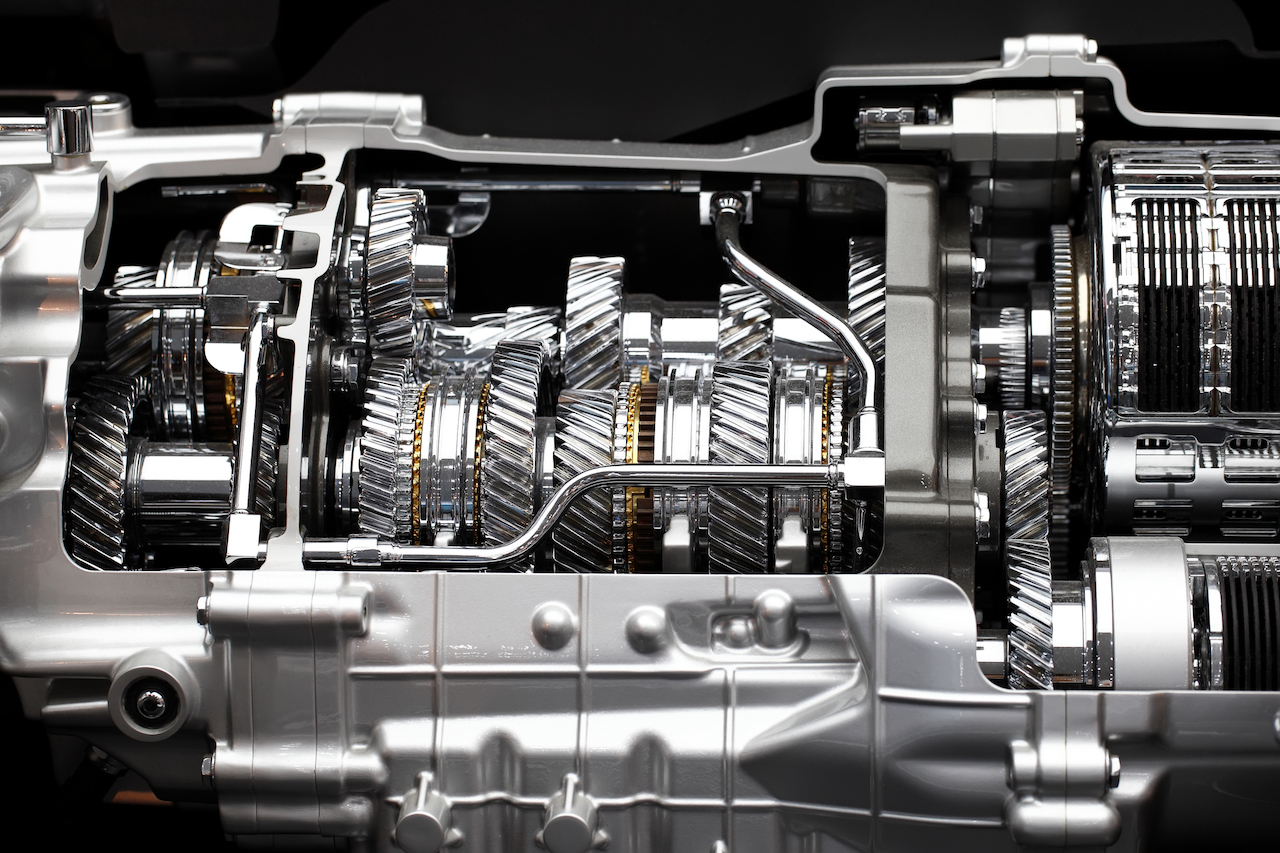Car gearboxes: How manual and automatic gears work
Gearboxes are crucial components in every car, that have

The gearbox is one of the building blocks of the modern car. Not surprisingly, it's also one of the most complex bits of hardware inside any vehicle.
A car's engine connects to its crankshaft, which rotates thousands of times per minute, according to the book Tribological Processes in the Valve Train Systems with Lightweight Valves. This is too fast for the wheels, so gears convert the power to speeds the wheels can handle. Gears use interlocking teeth, connecting small, fast-moving cogs to a larger gears with more teeth, and that larger cog rotates at a reduced speed.
Lower gears have larger cogs and enable the engine to deliver high levels of force without the car moving quickly, which is ideal when you're driving slowly or uphill, according to the journal Transportation Research Part A: General.
Higher gears deliver more speed rather than torque, which is great for smooth driving on the freeway.
Lower gears deliver more power, while higher gears supply more speed — but you've got to shift your way up through the gears to reach those high speeds. Most cars have at least five gears, which gives drivers finer control over power and speed.
Manual gearboxes
Manual gearboxes are complex — here's how the gearbox works in most cars.
History of gears
Gearboxes have been around for a while. According to the AIP Conference Proceedings, the first modern manual transmission was demonstrated by French inventors Louis-Rene Panhard and Emile Lavassor in 1894, and Louis Renault improved the design in 1898. In 1928, Cadillac introduced a synchronized system to make gear changes smoother.
Related: Formula 1: Technology, format and F1 facts
Gears for other uses are even older than automobiles, and remains of ancient gears have been discovered dating back to 4th century China. The world’s oldest working clock has been using gears to tell the time in Salisbury Cathedral since 1386.
Gearing up for the future

Most vehicles still use either a manual or automatic gearbox, but some new vehicles have modern CVT or dual-clutch systems, according to Driving.ca.
CVT stands for Continuously Variable Transmission. It's a type of automatic gearbox, but it differs from conventional hardware in one key way. Instead of using normal gears where drivers can feel the transitions, CVT gearboxes have a cone-shaped design and a system of pulleys to create a smooth transition up and down the car's power range, according to the International Journal of Scientific & Engineering Research. This is an efficient system that's often used in hybrid vehicles.
Dual-clutch systems are frequently found in semi-automatic cars, enabling the car to pre-select gears, meaning the driver can shift gear incredibly quickly. This system is often present on high-performance cars, and vehicles with gear-shifting paddles on the steering wheel.
Manual gearboxes aren't immune from innovation, either. Volkswagen has produced a new manual gearbox called the MQ281 that improves efficiency and reduces emissions, according to Volkswagen's website.
Automatic gearboxes
Automatic gearboxes appeared commercially in the 1940s, according to the International Journal of Vehicle Design, and now they are often more popular than manual transmissions. In fact a large majority of U.S. drivers use a manual vehicle, according to Readers' Digest.
Related: Central locking: How cars' electrical door locking works
Automatic gearboxes remove the need for a clutch pedal, which disconnects the engine from the transmission in order to change gear. Instead, they use a torque converter system, relying on gearbox oil to transfer energy from the input shaft to the gears. Computers in the car determine exactly when gears need to be changed.
This enables smooth gear shifts and easier driving, and automatic gearboxes are often more efficient than their manual counterparts.
Additional resources
You can watch a visual demonstration of manual gear transmission in this video by Lesics. To learn more about the future of car gears, read this article at Volkswagen's website.
Bibliography
- "Principles of valve train operation". Tribological Processes in the Valve Train Systems with Lightweight Valves. New Research and Modelling (2016).
- "Optimal driving for single-vehicle fuel economy". Transportation Research Part A: General.
- "Gear ratio calculation and comparison between sports utility vehicle (SUV’s) and race application". AIP Conference Proceedings (2018).
- "Driving automation: learning from aviation about design philosophies". International Journal of Vehicle Design (2007).
- "Cone Type CVT with High Speed Variations". International Journal of Scientific & Engineering Research (2015).
Sign up for the Live Science daily newsletter now
Get the world’s most fascinating discoveries delivered straight to your inbox.
Mike is a freelance technology journalist and consultant who is fascinated with gaming, futuristic technology and motorsport. Previously, Mike has worked as a writer for PC Pro magazine writing and published articles on technology for many other media outlets, including TechRadar, Wired, PC Advisor, Stuff, The Inquirer and Red Bull Gaming.











